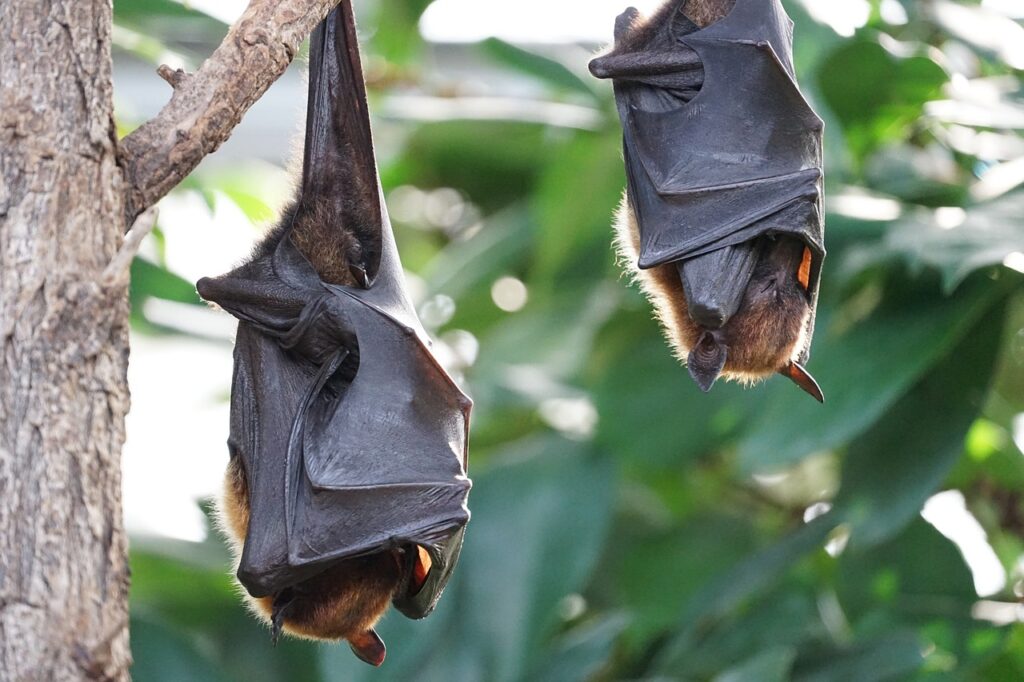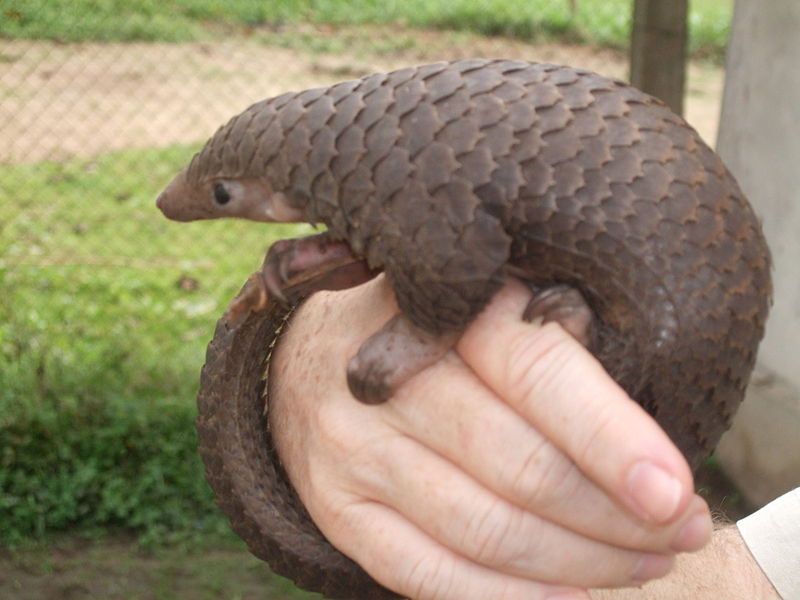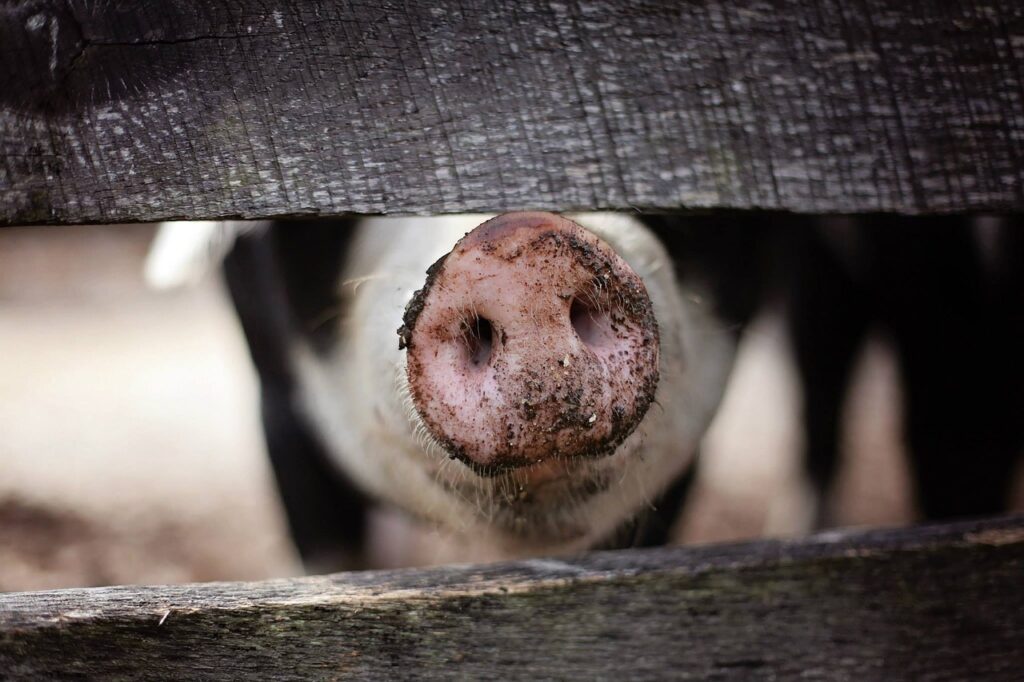
The novel coronavirus that is sweeping through the world is thought to originate from bats. This is quite typical — most viruses that affect humans have crossed species, often using intermediate species along the way. This begs the question: could this new strain jump from humans to other animals, such as our pets and livestock?
According to Scott Kenney, Associate Professor at the Department of Veterinary Preventive Medicine at Ohio State University, there is little to no research about a potential crossover of the novel coronavirus from humans to other species.
“Viruses are constantly sampling and evolving, trying to find other hosts,” said Kenney in a statement.
There are reports of both cats and dogs testing positive for COVID-19. However, we have found no evidence so far that they can transmit the disease to other animals or humans.
Bats: the viral reservoir of coronaviruses

Scientists who have sequenced and analyzed the genome of SARS-CoV-2 — the novel coronavirus that first surfaced in December 2019 in Wuhan, China — have confirmed that the virus is natural (i.e. not modified in some biolab), originating in bats.
Nothing about this information was surprising to scientists. Coronaviruses are zoonotic viral agents, meaning they all pass from one animal to the next.
The deadly Ebola and rabies viruses, as well as two other types of coronavirus — those that caused SARS (Severe Acute Respiratory Syndrome) and MERS (Middle East Respiratory Syndrome — also originated in bats.
There are four coronaviruses that cause common colds in humans — they are known as HCoV-229E, HCoV-NL63, HCoV-OC43, and HCoV-HKU1 — and they all seem to have zoonotic origins.
Bats are sort of natural viral laboratories due to their unique immune system. The only flying mammal has a very high body temperature and high levels of interferon, which signal the activation of antiviral molecules. Scientists believe that the bodies of bats are in a constant state of “fever”, leading to a suppression of their immune system, allowing them to tolerate more viruses.
When a virus infects a host, it can produce billions of copies of itself. Some of these copies contain genetic errors (mutations), most of which are weeded out by natural selection. But some of these mutations are helpful, allowing the virus to spread to more hosts, and are passed down to subsequent generations. When these mutations alter surface proteins allowing the virus to detect and bind to cell receptors belonging to a different species, the virus can officially cross territory into a new species.
However, the novel coronavirus didn’t jump straight from animals to humans. A study published last week in the journal Nature suggests that the endangered pangolin — a scaly anteater and the most illegally traded animal in the world — is the most likely intermediate host of the coronavirus between the coronavirus, bats, and humans.
According to the study, the genetic sequences of the novel coronavirus strain found in pangolins is 85.5% to 92% similar to the one currently infecting people in over 185 countries. SARS moved from bats to civets to humans, while MERS was transferred from bats to camels, before infecting humans.
From humans back to animals

If coronaviruses can jump from animals to humans, can they jump from humans to other animals, such as our pets or even livestock? Reverse zoonoses are possible, indeed.
In 2009, a 9-year-old chimpanzee at Lincoln Park Zoo in Chicago died of respiratory disease caused by human metapneumovirus. This virus is responsible for approximately 10% of all respiratory tract infections in humans. All seven members of a troop of chimpanzees at the zoo were infected with the virus, but only one became ill.
Elsewhere, at a wildlife sanctuary in Congo, 6 bonobos died after they caught influenza transmitted from humans.
Perhaps the most telling example of reverse zoonosis involves pigs. Many influenza viruses have crossed from humans to pigs causing serious outbreaks.
More recently, in 2009, the H1N1 subtype caused the previous pandemic, infecting millions of people and killing between 151,700 and 575,400 people, 80% of whom were under 65. This pandemic has remained in the public’s consciousness as the ‘swine flu’ because it originated in pigs, which acted as a mixing vessel of genetic segments originating from avian, swine and human strains.
The pigs had it much worse, though. According to a study performed by scientists in the US, at least 49 pandemic H1N1 transmission events from humans to pigs followed the 2009 pandemic — and that is an underestimation.

What about coronaviruses? Again pigs are the prime targets because they share a similar protein with humans that the SARS virus targets. For instance, in 2013, the porcine epidemic diarrhea virus (a member of the coronavirus family) killed millions of pigs in the United States and China, most of which were young. This virus continues to sporadically appear, much to the frustration of farmers.
“I’m not sure anyone really knows why,” Kenney said. “Outside of bats, pigs and humans seem to be infected by the largest numbers of different coronaviruses.”
There’s no mention in the scientific literature yet of the new coronavirus that causes COVID-19 jumping species again, but if it were to happen, the likeliest farm animal to catch it would be pigs. That’s why Kenney advises great caution such that farmers don’t infect their livestock.
“Any time you’re around an animal, you should use good hygiene. There are many illnesses besides coronaviruses in animals that can be passed to humans, and vice versa.
What about pets?
There is no reliable evidence that humans and pets like cats or dogs can infect each other with the novel coronavirus (unless you have a pet pangolin, which you definitely shouldn’t!).
There is one study in China that reported two dogs testing positive for COVID-19. However, the canines didn’t show any symptoms of the disease and the Chinese researchers don’t believe that the dogs transmitted the virus to other people or animals. These were ‘weak-positive’ tests that suggest dogs are poor hosts for the novel coronavirus.
Chinese authorities didn’t take any chances though. TIME reported that all animals living in the homes of people tested positive for COVID-19 were killed as a precaution.
More recently, the Belgian government’s public health department announced that a domestic cat had been infected with COVID-19. According to Dr. Daniel Desmech, a researcher at the Faculty of Veterinary Medicine of Liège, humans and cats share a similar protein on the surfaces of respiratory cells that lets the SARS-CoV-2 virus get inside.
However, Van Gucht stressed that human-to-pet transmission is not a significant path of viral spread.
During the SARS outbreak (caused by a close cousin of the novel coronavirus) in 2003, eight cats and one dog tested positive for the virus in Hong Kong. But no animal was found to transmit the disease to other animals or humans.
Bottom line: while there is evidence that pets can get infected, there is no evidence to suggest that they can transmit the disease — they might be dead-end viral hosts.
However, pets haven’t been tested for COVID-19 nearly as much as humans. That might have to change in order to form a more accurate picture of both the odds of infection and transmission between humans and various animals.
What precautions should pet owners take?
While a pet might get sick with COVID-19, there’s no evidence to suggest that the infected pet can, in turn, infect other humans. So, there is no need to panic.
Even so, it’s advisable that people who suspect that they have COVID-19 keep a distance from their pets. Perhaps, they can ask someone else to take care of them for some time until they are sure they’re not infected or recover from the illness.
If you are a confirmed case of COVID-19 and live with pets at home, it might be wise to contact your veterinarian for best practices. Some animals might need quarantining, either at home or in a hospital.


